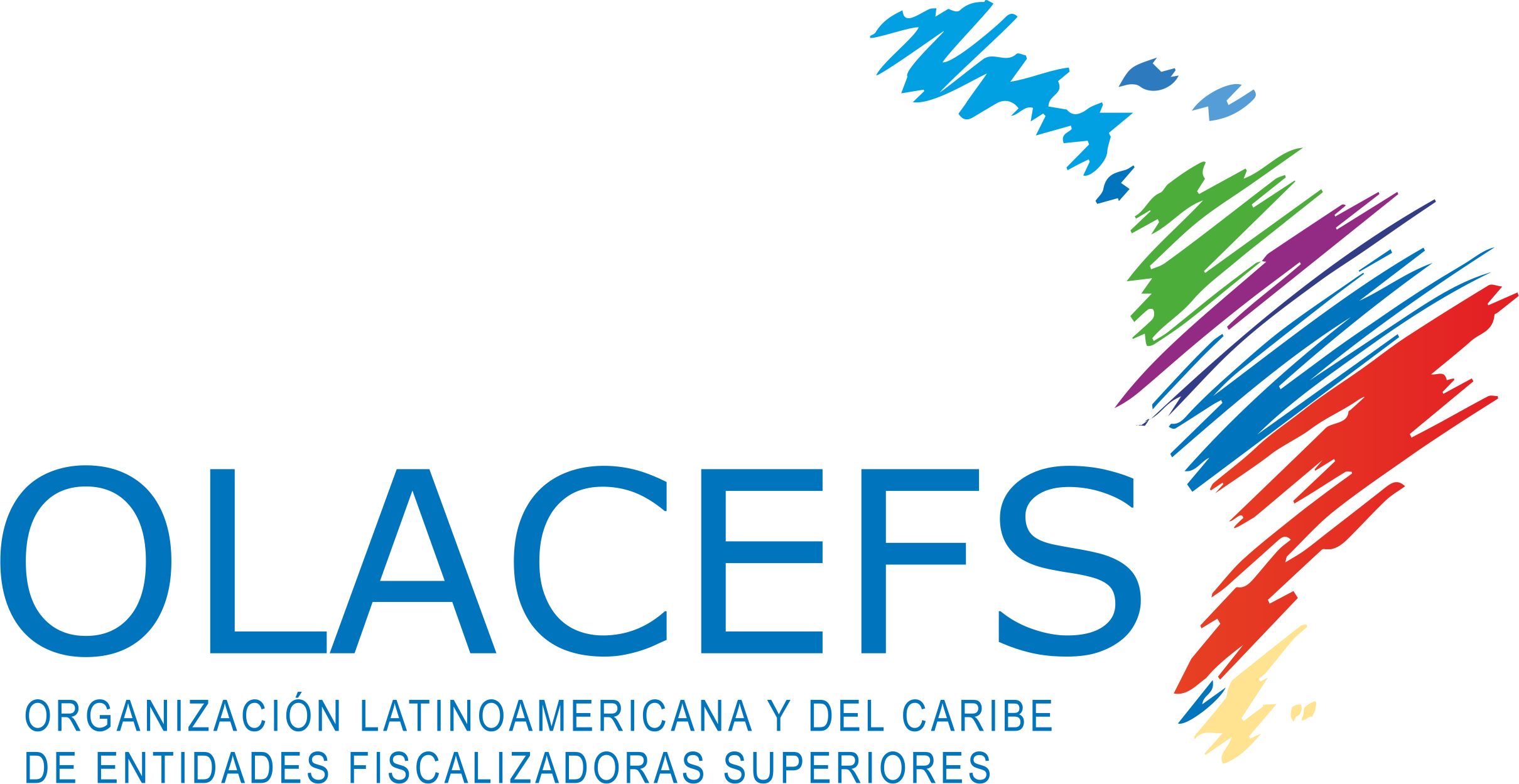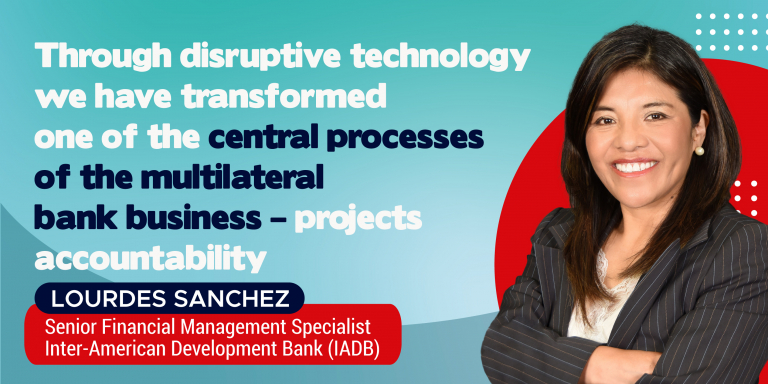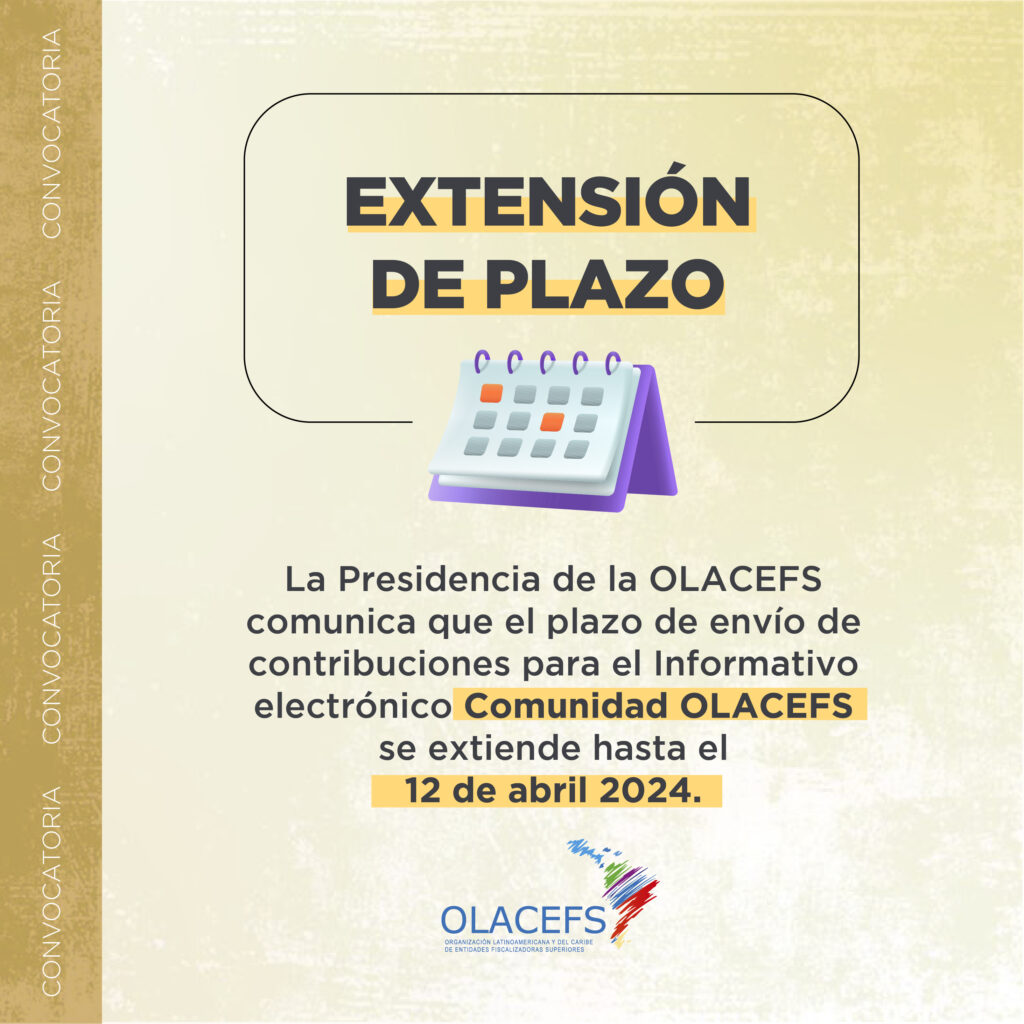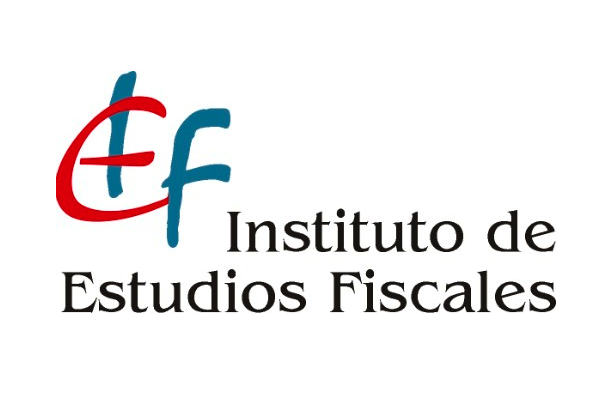Lourdes Sanchez
Senior Financial Management Specialist
Inter-American Development Bank (IDB)
The development of a region, country or institution is closely related to technology. Technological advances have had a fundamental impact on the prosperity of societies in many areas, mainly the economic one. For this reason, the IDB, whose mission is to promote development in Latin America and the Caribbean, is also advancing its own transformation at an accelerated pace and with objectively successful results as an organization.
The Bank provides and supports the development of advanced technological solutions in the region through the financing of projects with the ultimate goal of improving lives. At the corporate level, the challenges of the fourth industrial revolution have also knocked on our door and, as in any organization, it is a process that requires time to develop and adopt. This transformation adventure has challenged the usual way of doing things with a direct effect on how we fulfill our institutional responsibility to 48 member countries, borrowers and investors.
To begin this path of innovation and transformation, high-impact internal tasks and processes were identified that could be automated through the application of modern and disruptive technologies, with the aim of generating efficiencies, savings and data that would increase the quality of decision-making for the better fulfillment of our functions.
Through disruptive technology we have transformed one of the central processes of the multilateral banking business, project accountability. What was the result of this transformation? The addition of a new member to the IDB team: someone, or something, called Luca. The IDB has developed a bot to do the job that, historically, only humans have done: the review of Audited Financial Statements (AFS), automating it as a relevant part of the external audit management of projects.
In 2018, the IDB approved the Evaluation Policy Framework through a set of documents that outline the quality requirements and principles of preparation, presentation and review of the AFSs, the highest level of accountability of the 600 active projects per year. This framework assigns responsibilities to the Bank, Executing Agencies or Borrowers, and Independent Audit Firms or Supreme Audit Institutions for the issuance of financial reports attaching the opinion of an independent third party in order to comply with the annual contractual commitment that borrowers acquire for each loan transaction.
This is not simply a transition to new and better systems. Much more than that, it is an innovative transformation process. The use of cognitive technology as artificial intelligence in fiduciary processes shows a journey from the digitization of processes to the era of Big Data. It has led to the proliferation and substantial diversification in obtaining and managing previously unavailable data. In this transformation process, not only is artificial intelligence promoted, but also human intelligence. A perfect combination of both.
The most important characteristics of the processes Luca is in charge of:
- The initial source of information for this review. The AFS, a document of 45 pages on average, divided into four sections: i) the auditor’s opinion, ii) the financial statements, iii) the notes to the financial statements and iv) the internal control report. Remember that this is unstructured data (PDF or scanned documents).
- Luca uploads the document from the Bank’s official repositories or from the user’s or reviewer’s device to later analyze it. At this stage, Luca also estimates the time it will take to complete the analysis since it incorporates control mechanisms of its own performance in terms of time and percentage of automation.
- The previously linear process was transformed into an exponential one. Luca reads the document through OCR technology. It automatically converts the images of text in the document into text capable of being analyzed by Luca. This technology allows Luca to “learn” when identifying, extracting and converting key text for analysis and acceptance according to minimum quality aspects.
- In a matter of minutes, the first display of Luca’s analysis results is produced. The results of the review are shown through 56 tests of the existence and consistency of the information contained in the document versus: transaction information in the Bank’s systems, International Auditing Standards and the Bank’s Guides in that regard. The first three sections where these tests are applied are highly standardized.
- How do Luca’s built-in tests work? Based on an analysis of approximately 300 audit reports corresponding to previous years, a Data Modeling process was carried out in order to identify the best artificial intelligence techniques to adopt and in relation to a cost analysis (time and resources). Some techniques incorporated are the Leveshtein distance – character chain similarity, identification of patterns not perceptible to the human eye, but possible for this type of technology. Artificial intelligence and machine learning algorithms provide Luca with capabilities to not only make its review more accurate, but also to generate higher quality data.
- The second part of the analysis is the review of the Internal Control Report, the most challenging one. This section is prepared with few standardized elements. The ambition is great in terms of the type of information or analysis that Luca develops. Luca allows the reduction of human intervention in the process of manual review of internal control findings, assigns a level of risk and classifies them into categories of findings relevant to IDB project supervision. In this last section, the algorithms have homogeneous rules by which Luca analyzes the different paragraphs of this section and through feedback (use of the tool) will allow the training of the data model built for this section and that will improve its accuracy in the intelligent classification process more and more.
- Luca also has an administrative module that allows it to improve its capabilities and efficiencies achieved, as well as a dashboard that makes data available that was previously not accessible and therefore not consumable.
- Due to the above mentioned features, Luca is not yet an off-the-shelf model solution.
Some lessons learned:
- As we move forward in this transformation process, focusing on data and its quality as a reason to continue innovating and optimizing the introduction of technologies is highly positive. There are more costly technology options in terms of time and resources that could delay or sacrifice the efficiencies you want to achieve.
- Innovative projects that will incorporate disruptive technology must be started small so that they make small mistakes. Luca was initially developed in a proof of concept that was validated in 11 countries before developing the scalable version with current capabilities.
- Cultural change – understanding and appropriation of the use of these technologies. For the IDB, it was to bring clarity to a traditional dilemma: human and machine and not human versus machine. At the IDB, we undertook manual processes supported by basic technology, introduced advanced automation: relational databases or structured data up to cognitive technology and advancing to Data Analytics or Big Data. Cultural change is a strategy to be developed in parallel, involving the user in critical stages, assimilating feedback and sharing the resulting benefits and challenges. Also, discovering together what processes can be done differently.
I do not claim that the shared points are definitive or mandatory, but they are steps that the IDB has been following organically. Without being a startup, it took the path towards a new generation of more flexible and agile organization through digital transformation and artificial intelligence systems. By having that added agility and intelligence, we can transform even more processes where the human and the machine (robots) work side by side for the fulfillment of responsibilities.
In short, the digital transformation does not aim at the adoption of technology itself, but at a solution that generates efficiency in the execution of processes and, fundamentally, the obtaining and analysis of data in the shortest time possible without compromising its precision and quality. Data analysis is no longer a luxury technique that exists in very few organizations and is becoming a requirement for an organization’s survival. Therefore, it is totally relevant where we are in this journey and how we are taking advantage of machine learning and artificial intelligence techniques.
We can certainly conclude that “the future is not what it used to be,” not only because of the evolution of technology, but also because of the way we interact with it.
About the Author:
Lourdes Sánchez is a Senior Financial Management Specialist at the IDB. Her experience in the field of external control and auditing began in Bolivia, in the public sector, forming part of the country’s most important modernization process in financial management and control systems. Later, this experience was widely enriched by the management of development projects in Africa, Asia and Latin America as part of the project teams from different international organizations. Currently, within the processes of innovation and projects that incorporate disruptive technologies at the IDB, Lourdes led the development of a bot – robot for the review of audited financial statements, a technological solution that incorporates “Optical Character Recognition” (OCR), “Natural Language Processing,” “Text Analytics,” Sentiment Analysis, and machine learning.
Lourdes has an MBA in International Finance and an MS in Financial Information Systems Management from the State University of New York, other studies include Harvard University Business School and she recently obtained a certification in Digital Transformation from the Massachusetts Institute of Technology





